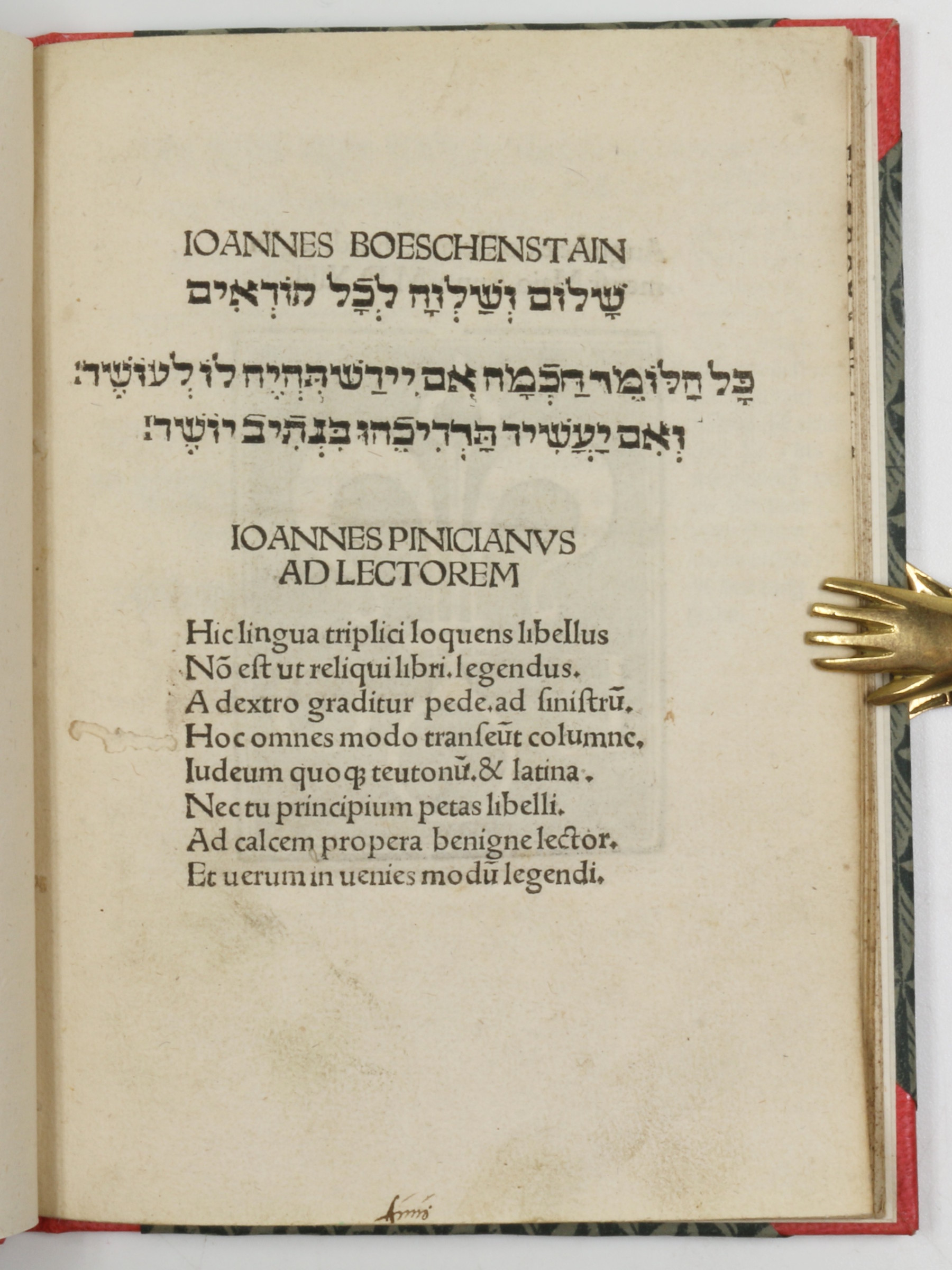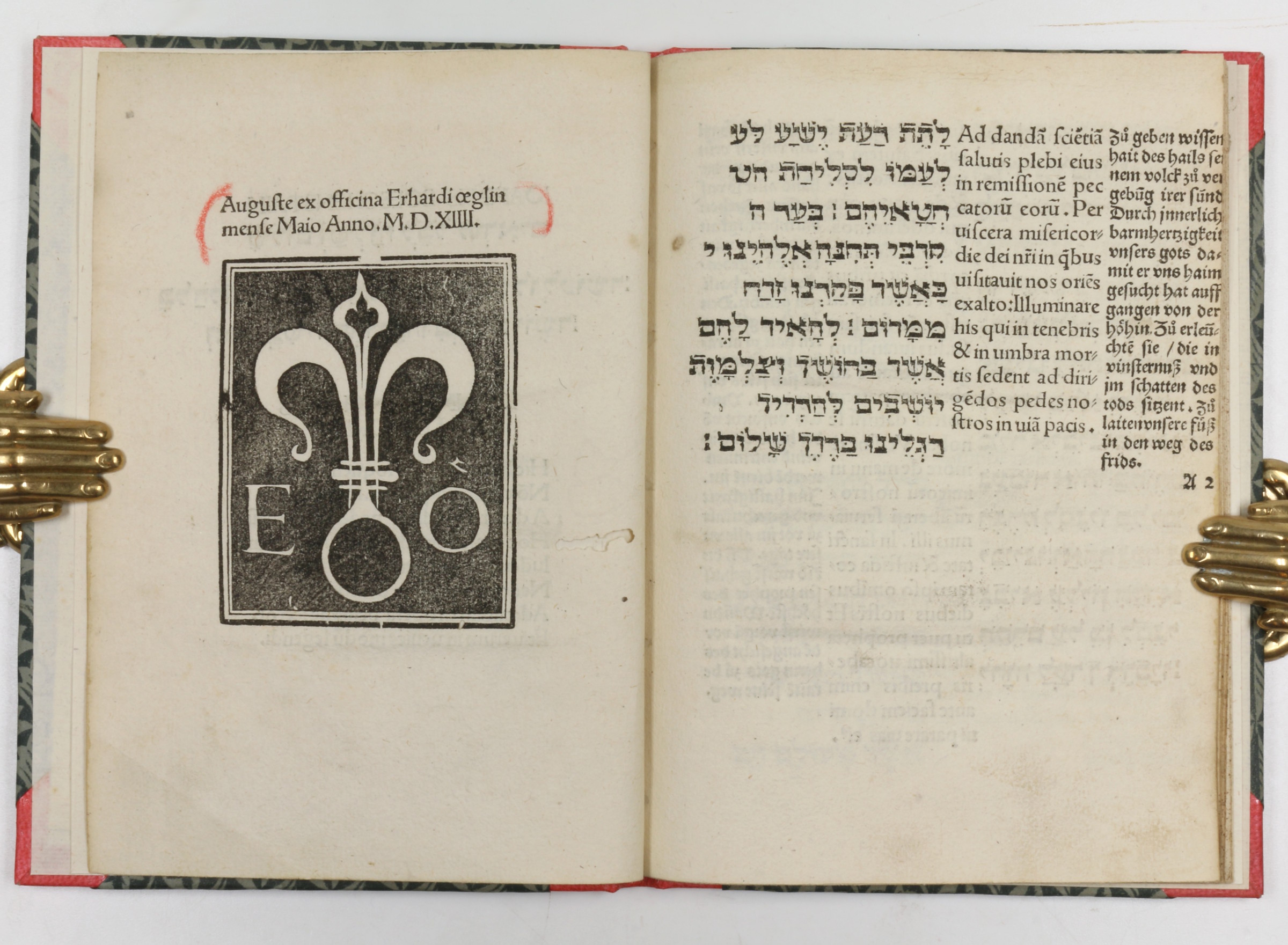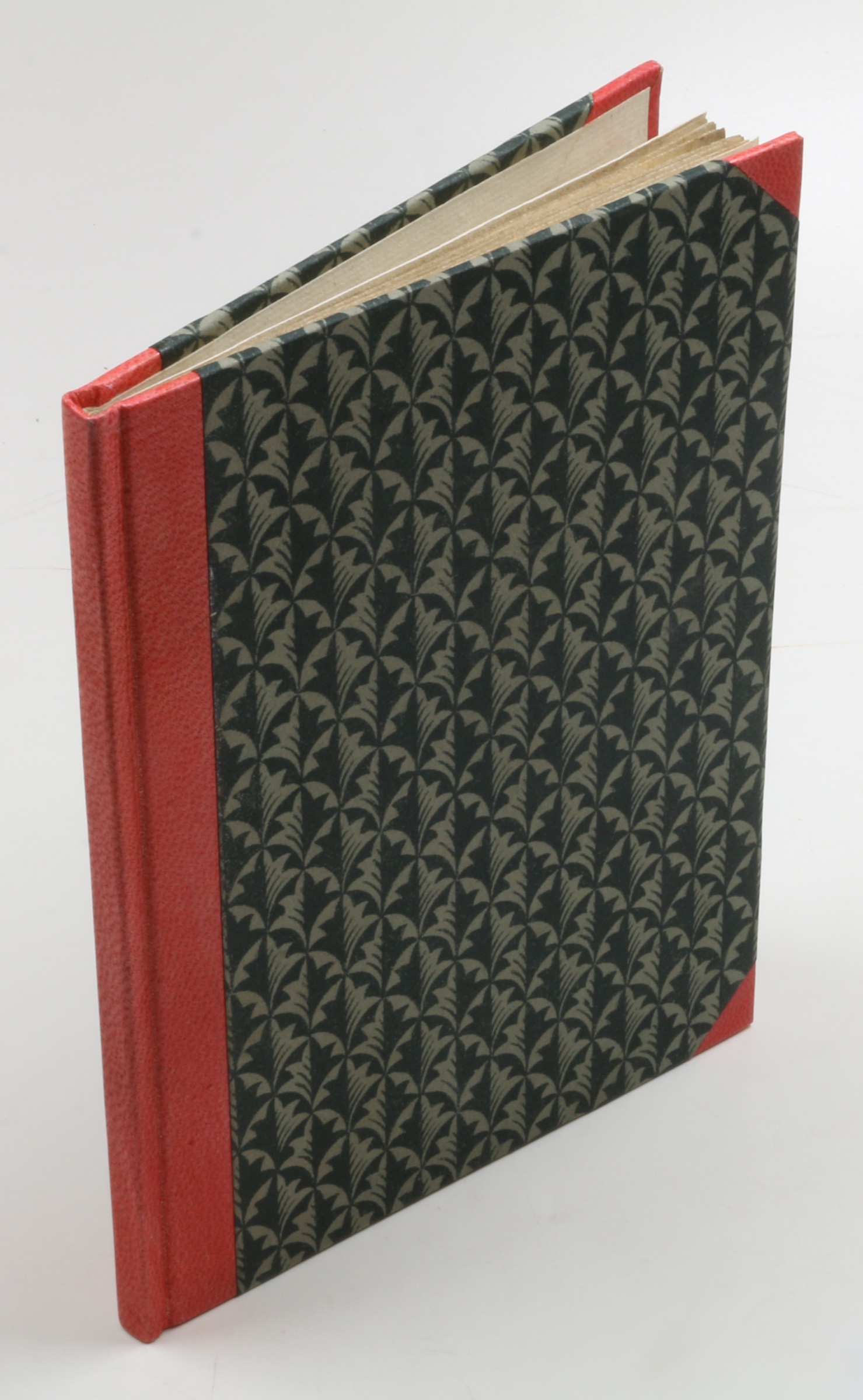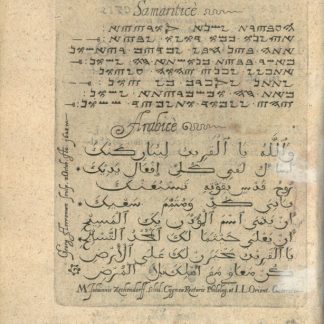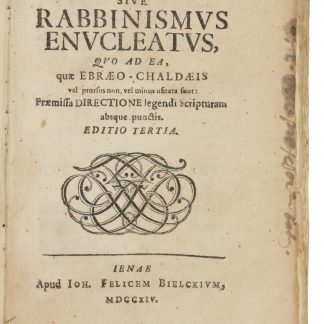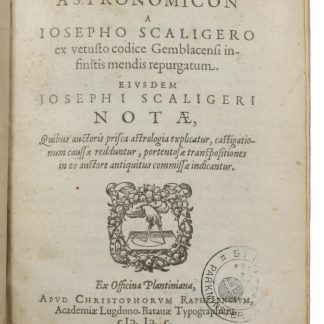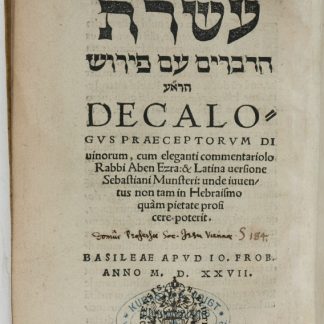[SOLD]
This item has sold. We are always interested in acquiring another copy or any item of comparable quality.
The first Augsburg books in Hebrew letters
[Be-sem arba`a ôtîyyôt]. Contenta in hoc libello nuper a Ioanne Boeschenstein Esslingensi edita. Elementale introductorium in hebreas litteras teutonice & hebraice legendas.
4to. (12) ff. With large woodcut device. (Bound with): The same. Benedictio Aaron super populum triplici lingua. [Ibid., 1514]. 1 f. Modern half vellum over marbled boards.
First edition.
Printed in three languages, the "Elementale introductorium in hebreas litteras" is one of Germany's earliest Hebrew coursebooks, a significant contribution to the study of Hebrew in the German Empire, and the first book ever produced in Augsburg to contain Hebrew letters. "A brief introduction to the language (letters, vowel signs, accents) is followed by various study texts (the Ten Commandments, Lord's Prayer, Hail Mary, Creed, Canticum Simeonis etc.), by which the Hebrew language is to be made accessible to learners. The texts are arranged side by side in three columns: the Hebrew text at left, the Latin one in the centre, and at the right the literal German translation" (cf. Dörner, col. 235). Some of the prayers were translated by Matthaeus Adriani.
At Luther's suggestion, Boeschenstein was installed as lecturer of Hebrew in Wittenberg in 1518/19; he later taught at Heidelberg, Antwerp, Zurich, Noerdlingen, and Nuremberg. Boeschenstein's Hebrew textbook is dedicated to his teacher Reuchlin. The dedicatory letter (misbound), dated 2 June 1514, declares the author's solidarity with the great humanist who was under fire for his 1511 "Augenspiegel" - attacks which Boeschenstein views as assaults on Hebrew scholarship as such. He also mentions with pride several of his own famous students, including Caspar Amman, Sebastian Sprenz, Heinrich Baron Sax, Johann von Eck, and Johann Voegelin.
Bound in the same volume is the second known copy of Boeschenstein's "Benedictio Aaron super populum" (in Hebrew, Latin, and German; not in VD 16), the only other known specimen of which is bound with a Munich manuscript (Chm 259). The "Priestly Blessing" is one of the scholar's two translations from Hebrew which were published as a broadsheet in the same year and by the same printer as the "Introductorium". "The scattered prayerbook items are characteristic of the age" (Steinschneider, in: Zft. für hebr. Bibliographie 2 [1897], p. 54, who still considers the "Benedictio" a fragment without being able to date the imprint).
The first leaf of the "Introductorium" (running right to left) has a contemporary handwritten collation note "principium" at the foot of the page; the colophon at the end is marked in sanguine pen. Slight traces of worming in the blank margin of the final leaf, otherwise a fine, quite insignificantly browned copy.
VD 16, B 6356. Adams B 2278. BM-STC German 134. IA 120.982. Steinschneider (Bibl. Handb.) 251. Proctor 10715. Panzer VI, 142, 70. Fürst I, 127. OCLC 889643598. Gerald Dörner, article "Böschenstein", in: Deutscher Humanismus Verfasserlexikon I [2008], col. 238, nos. 1 (Introductorium) & 3 (Benedictio; cf. also cols. 234 and 236f.). Steinschneider, Die hebräischen Handschriften in München (1875), Chm 259, p. 97, no. 4 (Benedictio). Cf. Walde, Christl. Hebraisten, p. 4.

